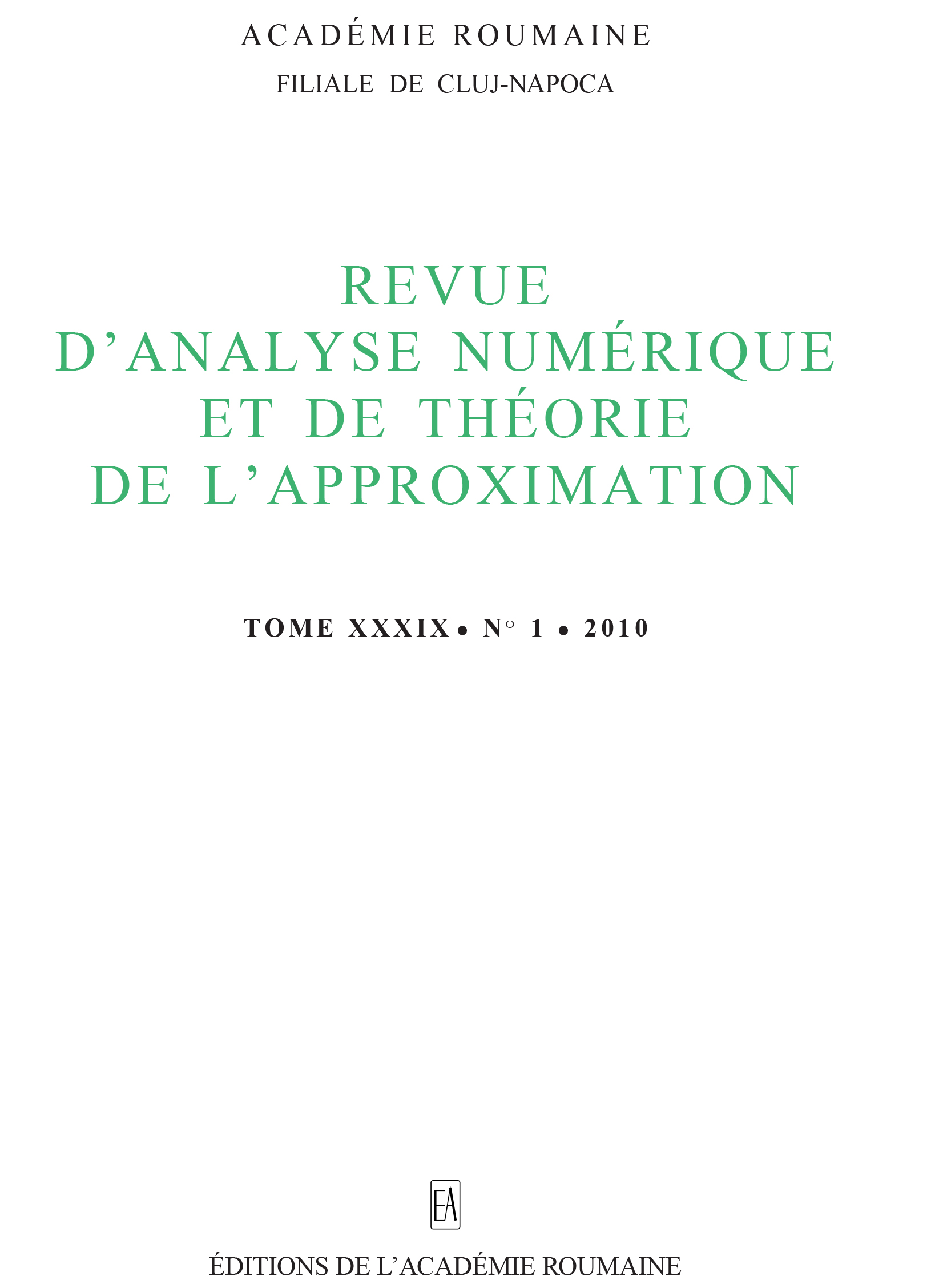On the composite Bernstein type quadrature formula
DOI:
https://doi.org/10.33993/jnaat391-915Keywords:
Bernstein operator, Bernstein approximation formula, Bernstein quadrature formula, divided differences, remainder termAbstract
Considering a given function \(f\in C[0,1]\), the interval \([0,1]\) is divided in \(m\) equally spaced subintervals \(\left[\tfrac{k-1}{m},\tfrac{k}{m}\right]\), \(k=\overline{1,m}\). On each of such type of interval the Bernstein approximation formula is applied and a corresponding Bernstein type quadrature formula is obtained. Making the sum of mentioned quadrature formulas, the composite Bernstein type quadrature formula is obtained.Downloads
References
Agratini, O., Approximation by linear operators, Presa Universitară Clujeană, 2000, (in Romanian), 2, pp. 27-31, 2007.
Bernstein, S.N., Démonstration du theorème de Weierstrass fondée sur le calcul de probabilités, Commun. Soc. Math. Kharkow, 13, no. 2, pp. 1-2, 1912-1913.
Popoviciu, T., Sur le rest dans certains formules lineaires d'approximation de l'analyse, Mathematica I, 24, pp. 95-142, 1959.
Stancu, D. D., Quadrature formulas constructed by using certain linear positive operators, Numerical Integration (Proc. Conf. Math. Res. Inst. Oberwolffach) (Basel) (G. Hammerlin, ed.), Birkhäuser, pp. 241-251, 1982. DOI: https://doi.org/10.1007/978-3-0348-6308-7_23
Stancu, D. D. and Vernescu, A., On some remarkable positive polynomial operators of approximation, Rev. Anal. Numér. Th eor. Approx., 28, pp. 85-95, 1999, http://ictp.acad.ro/jnaat/journal/article/view/1999-vol28-no1-art8
Stancu, D. D., Coman, Gh. and Blaga, P., Numerical Analysis and Approximation Theory, II, Presa Universitară Clujeană, 2002 (in Romanian).
Published
Issue
Section
License
Copyright (c) 2015 Journal of Numerical Analysis and Approximation Theory

This work is licensed under a Creative Commons Attribution 4.0 International License.
Open Access. This article is distributed under the terms of the Creative Commons Attribution 4.0 International License, which permits unrestricted use, distribution, and reproduction in any medium, provided you give appropriate credit to the original author(s) and the source, provide a link to the Creative Commons license, and indicate if changes were made.










